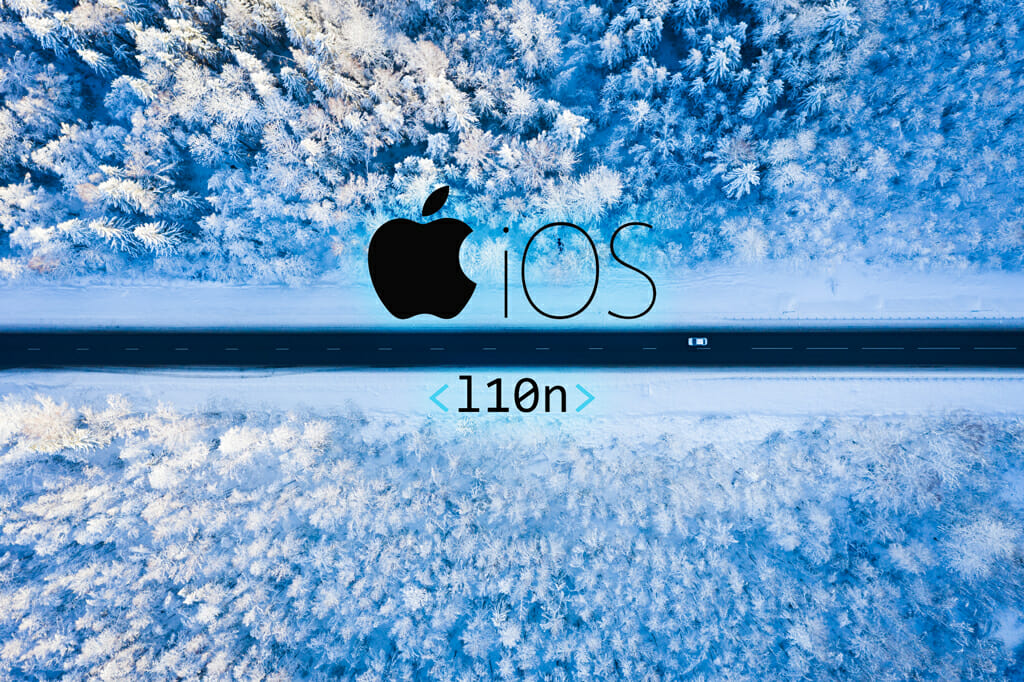Looking to translate an app for iPhone? Fear not, it isn’t quite as complex as you might first imagine and is certainly worth doing to engage a wider audience!
The app. First fully introduced to the world back in 2007 with the launch of the iPhone fundamentally changed the tech landscape. The benefits of app development are numerous. By giving companies a unique way to connect and engage with their consumers. Business visibility, customer retention, direct marketing, increased sales, brand awareness, direct access to your customers and their data.
“The rich and interactive experiences we have come to expect on mobile apps have created
new standards and expectations for all digital media.”
– Tomi Ahonen
With all that in mind, can you afford not to reap those same benefits in your international markets too? Let’s delve under the hood of translating your iPhone app content and show just how painless it can be!
iOS App l10n: Technicalities
Any coder worth their salt will tell you the importance of keeping code well-segmented and away from meddling fingers. Within an iOS App, the text strings are located within .nib files. These are the interface builders used to design the visual parts of your app. Each language version of your app has its own, so when users select a language, the relevant .nib file loads. This, in turn, loads the content related to whichever language they have selected. Simple enough, right?
These text string files are either created manually by app developers or programmatically via localization string loading macros. Allowing content editing to occur without interfering with the app’s code and separated by the infrastructure in resource files. Meaning content can be easily accessible and localized without those meddling fingers we mentioned disrupting the overall infrastructure.
Having translators access the .nib files – stored on the master server – each time you change content is a drawn-out process. Especially considering they’ll need to be distributed to every installation of your app, on every iOS device, every update. Versions and distribution can be managed through systems like GitHub or Bitbucket. However, is there a viable all-inclusive option?
Well, we’re glad you asked! The journey of .nib files from a master server to a translation provider can (and should) be fully automated. See the handy flow diagram below that showcases how the TextUnited workflow functions for this process.
Using a l10n methodology process, you can avoid the complexity of string extraction, internal editors, and learning code. Steering away from code in general, we think, is a good idea purely due to the potential for accidental destruction!
iOS App l10n: Pain Points
Still don’t believe us? We know the elements of this process inside and out, both with and without our methodology. So we’ve broken down the key pain points you’re likely to encounter when translating content for an iPhone app:
- Continuous integration compatibility – both technical and operational.
- Translated word lengths interfering with the user interface.
- Multiple different alphabets to engage with.
- Machine Translation? Human Translation? Both?
- Project managing translators and their deadlines.
- Finding the right translators who not only know the source language but your sector too (and at a reasonable cost).
- Find In-Country Reviewers to check your localizations are authentic for the target language and market segment.
- Finding translators who are either also coders or understand enough about keys and strings!
- Preparing for the eventuality that someone at some point will inadvertently and unintentionally delete something integral to your app.
- Investing time and resources into developing your processes to simplify sending .nibs back and forth/granting access.
- Maintaining privacy policies around data (both your own and those of your users) and any pertinent NDAs for your app IP.
- Bankrolling all of the above while keeping the whole process financially viable.
As a CMS integration, TextUnited plugs straight into your existing versioning system, where you can authorize access to the .nib files. Through a login-protected GUI, you can now grant access to the people tasked with handling the translation. We’ve also developed an API ideal for use in instances like this if you want to take the automated route!
Better yet, we can function as a complete Translation Management System, where TextUnited handles all aspects of your translation. You would simply upload your content, and we provide translation, localization, ICR, and delivery to a specific URL or repository.
short instruction of using TextUnited to translate an app for iPhone:
1. Log on to this TextUnited page and load a file that you have to translate.
2. Choose all languages for human translation.
3. Set a deadline
4. Once the translation is complete, you will be notified, and your iPhone app will be updated automatically with the translated content.
Don’t Forget
While translating the necessary strings that your international users will engage with, here are two reminders!
If your app targets users in multiple countries, it’s best to have your T&Cs available in each language. We’d recommend the Privacy Policy, too, just so it’s clear that your non-native-speaking users understand your data usage.
Moreover, translations of your app description for non-English international App Stores. Also, translate those handy screenshots that you see in the App Store of your product in action! Non-English speaking customers in international markets will benefit from simply being able to understand how your app works!
Need further convincing before taking the plunge with your app translation? Why not try out our free trial to find out just how easy it is to benefit from our expertise!

